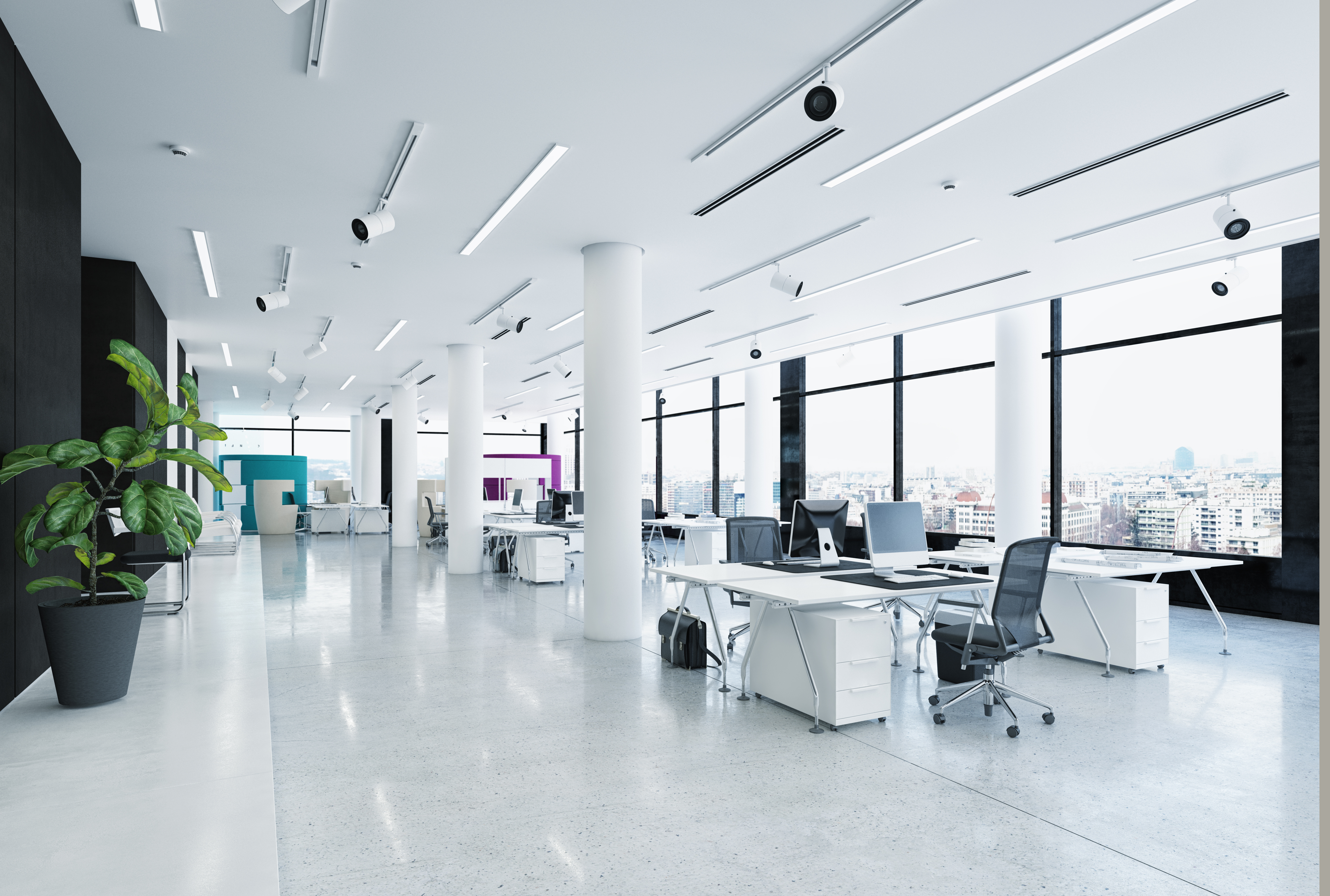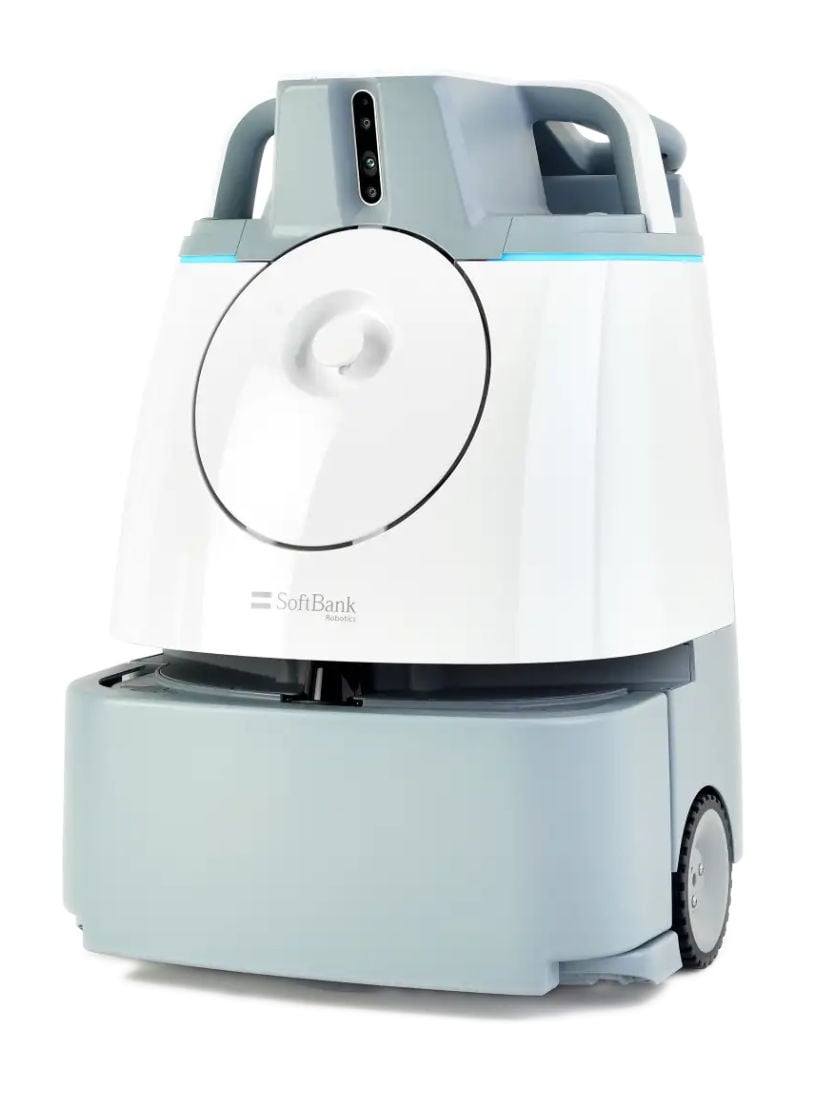Companies looking for a new employee productivity solution as their workforce returns to their building need to look no further than the office itself. There’s ample scientific evidence that small changes to the office environment can influence productivity by supporting improved focus, reducing sick days, and greater comfort.
Office environments are likely to look a bit different in the future as organizations adapt to new expectations for cleanliness and space organization based on lessons learned from the COVID-19 pandemic. While many of the old rules for creating a healthy office space will still apply, employers should also consider more creative ideas to improve the work environment and boost worker productivity in the year ahead. Below we offer 10 ways offices can develop workplaces that are more conducive to productivity.
How to Create a Healthy Office Space:
1. Rethink the office layout to encourage social distancing
Remember when open offices were all the rage? A lot has changed in the last year. Now, social distancing requirements due to the COVID-19 pandemic are pushing office managers to reconsider a more closed, or at least spaced out office layout. By including this in a layered approach to reducing infection transmission rates, companies can reduce absenteeism and, consequently, boost workplace productivity.
As it turns out, before the pandemic hit, the research was already pointing out that open floor plans can lead to increased office dissatisfaction, making this a quite timely employee productivity solution. “[W]hen infringements on personal space intrinsic to the open-plan design exceed employees’ comfort levels, feelings of crowdedness and loss of privacy are likely to emerge,'' write researchers in An Overview of the Influence of the Physical Office Environments Toward Employee. “These feelings of crowdedness and loss of privacy then result in the dissatisfaction and negative reactions displayed by employees working in open-plan workspaces.”
Dissatisfied, disengaged workers cost organizations roughly $450 to $550 billion each year in lost productivity. That’s enough to make an investment in office layout worthwhile.
2. Provide visible reminders of clean
For employees who have been working remotely due to the pandemic, a return to the workplace could be a cause of stress. Research indicates that your employees may be feeling anxious about a range of factors, including inadequate or infrequent cleaning and sharing high-touch surfaces with coworkers. A critical step for addressing these concerns is highlighting those cleaning activities being performed to ensure a healthy office space.
While cleaning may once have been relegated to after-hours not to disturb work, some offices may benefit from bringing cleaning into the 9 to 5 timeframe. Solutions like Whiz, the commercial robot vacuum, developed in partnership with Brain OS and ICE Robotics, can clean along with pre-programmed works through the office while your staff is at work, even moving around obstructions.
Automated cleaning equipment can collect data providing visibility and traceability around your cleaning operations. Sharing this level of data with office workers can provide added confidence that cleaning measures are consistent and effective. This empowers you to act with agility and optimize decisions based on data-driven insights.
3. Ensure appropriate lighting
There’s a great deal of research available that demonstrates that natural daylight—or artificial lighting that emits light in the same spectrum as sunlight—supports productivity. Among the latest examples, a 2018 study from Cornell University professor Alan Hedge found that workers in daylit office environments reported an 84% decrease in eyestrain, headaches, blurred vision, and other symptoms that can detract from productivity.
Hedge suggests that even a 2% increase in productivity can achieve “an additional $100,000 of annual value for every 100 workers,” earning an average yearly salary of $50,000.
4. Address noise issues
Office workers report “the ability to concentrate without noise and other distractions” to be one of the most essential features of a healthy office space. This means it’s crucial to cut down on the noise. However, it’s also important to note that the type of noise matters here. Conversation around a workspace can be a significant distraction. On the other hand, researchers have found that a moderate white noise level—about 70 decibels—can actually enhance creative tasks. That means that certain background noise may help boost productivity. That’s great news for offices deploying cleaning solutions like Whiz, which operates at around 67 decibels.
5. Use natural ventilation where and when possible
In the year ahead, more offices may be turning to the use of natural ventilation. According to the CDC, opening those office windows can “increase outdoor air dilution of indoor air,” which helps further reduce the transmission of potential airborne virus particles. Again, taking measures to change the environment can help reduce absenteeism due to illness, making this a particularly critical employee productivity solution.
6. Prevent allergens
Research indicates that our indoor environments can actually be more detrimental to our health than outdoor environments. In fact, dust, molds, pollens, and other potential allergens or pollutants can contribute to “sick building syndrome.” Sick building syndrome shows up as a range of temporary symptoms including headaches, chronic fatigue, and reduced cognitive functions, all caused by poor indoor air quality. It can also lead to more permanent problems, including asthma and other respiratory issues. Altogether, these symptoms can have a dramatic impact on productivity. One UK study put the costs of sick building syndrome in a large government office with 2,500 occupants at more than $500,000 a year.
Keeping indoor spaces cleaned and well ventilated are key to maintaining good indoor air quality. More frequent vacuuming, air cleaning, appropriate ventilation, and other strategies can help keep workers healthy, calm, and productive.
7. Pay attention to chemicals used for cleaning
A potential environmental irritant to watch for might come straight from the EPA’s List N: Disinfectants for use against SARS-CoV-2. While disinfecting high-touch surfaces is a recommended strategy for limiting the transmission of viral particles, it’s critical to use good judgment. As the nonprofit green product organization Green Seal notes, the effort to reassure workers that their offices are safe has led some workplaces to turn to “unnecessary or even counterproductive cleaning and disinfection methods.” Keep it simple when it comes to disinfection and work to prevent irritants or other air quality problems that could send workers home.
8. Consider new furniture
Comfort and ergonomics are big factors in boosting office productivity. After all, office workers may spend a significant amount of time sitting, and discomfort can lead to distraction. However, this year the focus should be on the cleanability of your furniture. Desks and office chairs that are easy to wipe down with disinfecting wipes can put concerns at ease around cohorting or shared office use and contribute to a healthy office space. One place to look for comfortable options: furniture providers serving the healthcare industry. This industry has led the way in developing solid surfaces and soft fabrics that can withstand regular disinfection, while looking stylish and feeling comfortable.
9. Check your bandwidth
Offices may still consider encouraging cohorting that allows workers to come into the office in groups. It’s a strategy that helps support social distancing measures by allowing workers to spread out in groups. If your team will remain productive from a distance, now is the time to touch base with your IT department to determine what other measures can be put in place to ensure you’re able to connect seamlessly with remote coworkers.
10. Allow flexibility
No matter what steps you take to keep your employees safe, there will be varying infection risk levels in the year ahead. Flexibility around remote working will be vital for retaining top talent. Those workers who feel cared for and invested in, and who are given the space to care for themselves and their families, are more likely to demonstrate company loyalty.
That loyalty can pay major dividends. University of Pennsylvania researchers found that spending 10% of company revenue on capital improvements increased by nearly 4% of employee productivity. Investing that same amount in developing employee capital more than doubled that amount, to 8.5%.
The right investment can have a powerful impact on your company’s bottom line. Whiz is no exception. To learn how cleaning automation can support your workforce’s productivity, contact SoftBank Robotics today.








